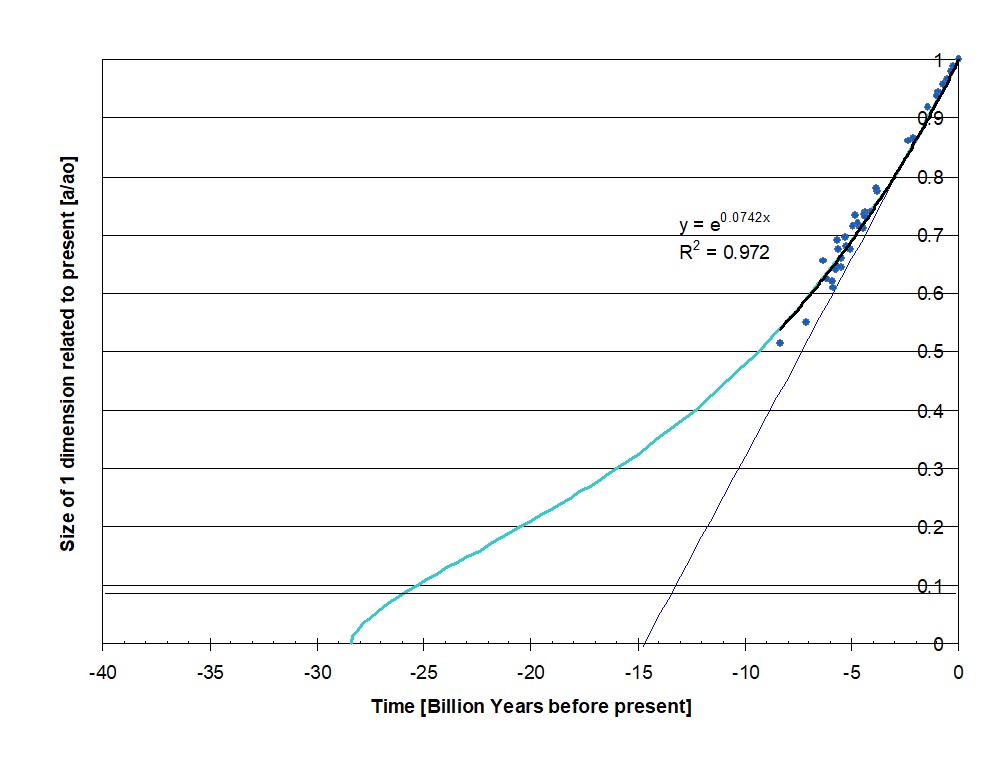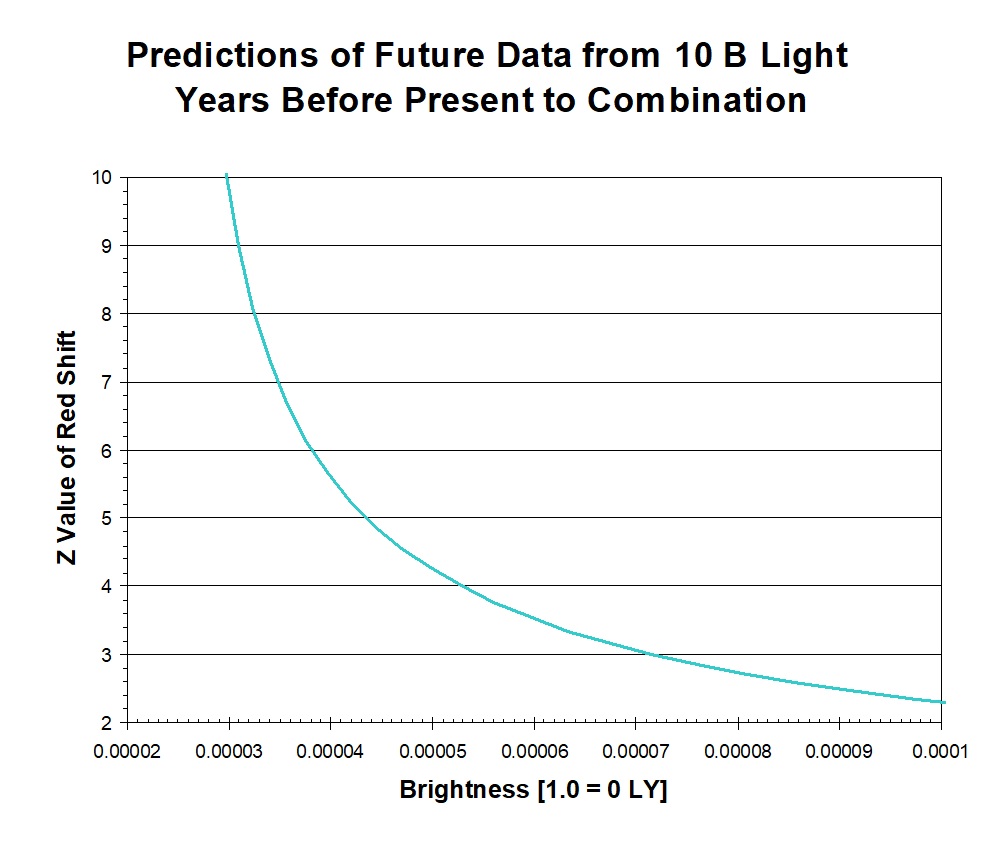So, if we look at the values that we have calculate from the other chapters [MEK Theory, History of the Universe, Dark Energy/Dark Matter] we can apply them to determining possible data from future observations. Initially we started with that data from the observations of 1A supernovae, as illustrated by Perlmutter, et al in this graph of relative size of the universe versus age of the universe. (Or, more accurately the red shift of the supernovae light versus the relative brightness of the supernovae).

As can be seen, the rate of expansion of one dimension was assumed to first decelerate and then reach an inflection point and accelerate for all times after that. The deceleration was due to the effects of gravity and mass density, which would decrease as the universe became larger. This is in keeping with the Einstein Field Equation, and the Friedmann derivation.


For these equations, we determined that the values are:
Λ = 1.87 x 10 – 52 m-2
ρ = ρ[baryonic energy] – ρ[baryonic matter]
ρ0 = 2.2 x 10 – 31 g/m3 (today)
And we can plot the graph as:

Which is pretty close to the graphs that Perlmutter predicted, although stretched out to a bit more time. Important times are found to be:
Time since Combination = 25.7 Billion Years
Time since Beginning of Universe [with Inflation] = 26.0 Billion Years
Time since Beginning of Universe [w/o Inflation] = 27.5 Billion Years
IN THE FUTURE
Astronomers are continuing to probe ever deeper into the universe’s past. The Hubble telescope continues to provide data for determining the processes that produced the galaxies, galactic clusters, and great void that we see today. And in particular, the Webb telescope will give astronomers the ability to collect information from galaxies that are greater than 10 billion light-years away.
We can use our understanding of the effects of dark energy and gravity to predict what data will be collected in the near future.
The following graph is an example of data that would be predicted by the Little Bang Theory / MEK Theory as applied to universal evolution.

Brian Nelson, 28 August 2022